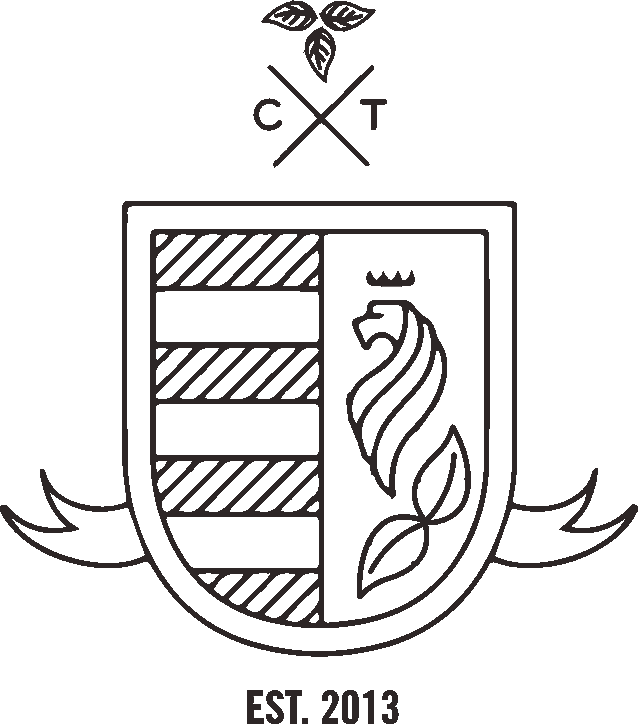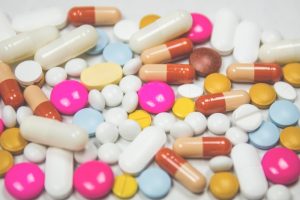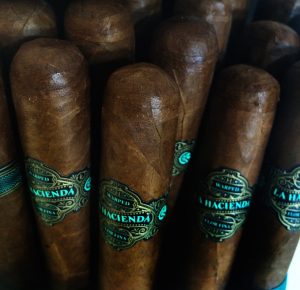10% off your first order
Free concierge design service :
(424) 226-8612
10% off your first order
Free concierge design service :
(424) 226-8612

 When one thinks of drugs, one typically thinks of substances like heroine, cocaine, meth, marijuana, and ecstasy. It?s easy for us to say something is a drug, but how do we actually define what a drug is? While substances like heroine and cocaine have psychoactive and addictive properties, can a drug be defined by these properties? Alcohol, caffeine, and nicotine are psychoactive and addictive as well but they generally are not considered drugs. Other substances, such as ecstasy and marijuana, are considered drugs but they are not physically addicting. Drugs can alter our moods, but even this cannot be its defining property. People can feel happy from eating sugar or from exercising, even achieving a ?runner?s high.? Drugs can cause physical effects in our body, but it cannot be defined by those changes. Physical diseases cause physical effects as well but they are not considered drugs. Drugs can be classified by certain chemicals but not all chemicals are drugs. You can define drugs as substances that form habits for the user, but people can form habits with other things as well, such as preferring a certain food to others. Basically, what we define as drugs is based on a social construction formed by societal and political forces. According to criminologists Robert F. Meier and Gilbert Geis, drugs are any substances we call drugs; there is no inherent property of drugs that defines them.
This is all made even more complicated by the fact that drugs are seen in different lights depending on the context they are taken in. Taken recreationally, drugs are seen as part of a deviant lifestyle that flies in the face of the law. Despite these negative connotations, drugs administered in a medical setting by a health professional are deemed as essential and life-saving. Even outside of these two dichotomous settings, Americans partake in drugs in everyday life without even realizing it. When we first wake up in the morning, we may enjoy a cup of coffee, a substance chock full of caffeine. Some people smoke cigarettes or cigars. After work, some people like to go out to a bar and drink alcohol. Some people take daily medications for whatever ails them, from allergies to birth control. For the special events in our lives such as marriages or birthdays, we often celebrate with some form of alcohol. Champagne is a staple of any wedding or New Year?s celebration. Young adolescents celebrate their twenty first birthday at clubs or bars as a rite of passage. People often give cigars as gifts for holidays like Father?s day, and they can even order their own customized cigars from companies like Custom Tobacco. Essentially, drugs have become ingrained into the daily fabric of our lives without us even realizing it.
When one thinks of drugs, one typically thinks of substances like heroine, cocaine, meth, marijuana, and ecstasy. It?s easy for us to say something is a drug, but how do we actually define what a drug is? While substances like heroine and cocaine have psychoactive and addictive properties, can a drug be defined by these properties? Alcohol, caffeine, and nicotine are psychoactive and addictive as well but they generally are not considered drugs. Other substances, such as ecstasy and marijuana, are considered drugs but they are not physically addicting. Drugs can alter our moods, but even this cannot be its defining property. People can feel happy from eating sugar or from exercising, even achieving a ?runner?s high.? Drugs can cause physical effects in our body, but it cannot be defined by those changes. Physical diseases cause physical effects as well but they are not considered drugs. Drugs can be classified by certain chemicals but not all chemicals are drugs. You can define drugs as substances that form habits for the user, but people can form habits with other things as well, such as preferring a certain food to others. Basically, what we define as drugs is based on a social construction formed by societal and political forces. According to criminologists Robert F. Meier and Gilbert Geis, drugs are any substances we call drugs; there is no inherent property of drugs that defines them.
This is all made even more complicated by the fact that drugs are seen in different lights depending on the context they are taken in. Taken recreationally, drugs are seen as part of a deviant lifestyle that flies in the face of the law. Despite these negative connotations, drugs administered in a medical setting by a health professional are deemed as essential and life-saving. Even outside of these two dichotomous settings, Americans partake in drugs in everyday life without even realizing it. When we first wake up in the morning, we may enjoy a cup of coffee, a substance chock full of caffeine. Some people smoke cigarettes or cigars. After work, some people like to go out to a bar and drink alcohol. Some people take daily medications for whatever ails them, from allergies to birth control. For the special events in our lives such as marriages or birthdays, we often celebrate with some form of alcohol. Champagne is a staple of any wedding or New Year?s celebration. Young adolescents celebrate their twenty first birthday at clubs or bars as a rite of passage. People often give cigars as gifts for holidays like Father?s day, and they can even order their own customized cigars from companies like Custom Tobacco. Essentially, drugs have become ingrained into the daily fabric of our lives without us even realizing it.
 Compared to today, casual every day drug use was actually more rampant in the past. Heroin and morphine were sold over the counter as medical remedies. When authorities started to crack down with drug laws, it was not the drug themselves they were trying to regulate but rather a group of people ? a certain ethnic group to be exact. In 1875, in the windy city of San Francisco, legislators passed a law banning the practice of smoking opium in opium dens Patrons of these opium dens were primarily Chinese American. This law was perpetuated by the fear that these Chinese immigrants were seducing white women into the dens. There was a cultural misunderstanding as to the purpose that the dens held in Chinese culture. While the opium dens served a purpose to the Chinese similar to that of a bar, the dens were vilified and seen as cesspools of deviant activity. In reality, the Chinese used opium as a social stimulant and a way to relax, similar to recreational alcohol use. In addition to this stereotype, the Chinese were seen as competition against white working class men in the labor market. The law that was passed had clear racial motivations, as the law allowed opium use in other forms, only the smoking of opium was outlawed. According to Craig Reinarman in Constructions of Deviance: Social Power, Context, and Interaction, this phenomenon can be termed a ?drug scare.?
One of the most well known drug scares in American history is the Prohibition period. In Reinarman?s words, a drug scare is ?a form of moral panic ideologically constructed so as to construe one or another chemical bogeyman.? In other words, the drug in question is cast as a scapegoat for society?s other woes. Prohibiting the certain drug is seen as a quick-fix solution in reaction to marginal racial groups. During Prohibition, members of the Temperance movement were primarily composed of middle class Protestants. While claiming to fight against the problem of excess drinking, the Temperance movement was actually a reaction to the influx of working-class Catholic immigrants. The dispute over alcohol use was actually a cover for more deep-seated cultural issues and ideologies between these two cultural groups. During this period of industrialization, the factories mostly employed Catholics. The Protestants of the Temperance movement argued that the drinking habits of the Catholics would waste productivity within the factory. They painted bars as ?a breeding ground of all sorts of tragic immorality,? according to Reinarman. Thus alcohol became the scapegoat for much larger problems in society that stem from a nexus of different societal and political causes.
Similar to how opium became associated with working Chinese immigrants, the consumption of marijuana became associated with marginal social groups, largely Mexican Americans and African Americans. During the Great Depression, the Federal Narcotics Bureau fought for the criminalization of marijuana, a plan that came to fruition in 1937. A drug scare over marijuana reoccurred decades later in the 1960?s. Around the same time, instead of becoming associated with a certain racial group, LSD became associated with dissenting youth. Cocaine consumptions was linked to impoverished minorities living in the inner-city. Each scare produced drug laws aimed at restricting drug use and consumption. Reinarman argues, ?I have found no evidence that any scare actually accomplished those ends, but they did greatly expand the quantity and quality of social control, particularly over subordinate groups perceived as dangerous or threatening.? Drug laws allowed the reigning social group or majority to exert control over a less powerful social or ethnic group.
As these drug scares rise up from time to time, we can extrapolate a pattern to the structure of a drug scare. A drug scare will typically have seven components, according to Reinarman. These components are comprised of a kernel of truth, media magnification, politico-moral entrepreneurs, professional interest groups, historical context of conflict, linking a form of drug use to a ?dangerous class,? and scapegoating a drug for a wide array of public problems.
Compared to today, casual every day drug use was actually more rampant in the past. Heroin and morphine were sold over the counter as medical remedies. When authorities started to crack down with drug laws, it was not the drug themselves they were trying to regulate but rather a group of people ? a certain ethnic group to be exact. In 1875, in the windy city of San Francisco, legislators passed a law banning the practice of smoking opium in opium dens Patrons of these opium dens were primarily Chinese American. This law was perpetuated by the fear that these Chinese immigrants were seducing white women into the dens. There was a cultural misunderstanding as to the purpose that the dens held in Chinese culture. While the opium dens served a purpose to the Chinese similar to that of a bar, the dens were vilified and seen as cesspools of deviant activity. In reality, the Chinese used opium as a social stimulant and a way to relax, similar to recreational alcohol use. In addition to this stereotype, the Chinese were seen as competition against white working class men in the labor market. The law that was passed had clear racial motivations, as the law allowed opium use in other forms, only the smoking of opium was outlawed. According to Craig Reinarman in Constructions of Deviance: Social Power, Context, and Interaction, this phenomenon can be termed a ?drug scare.?
One of the most well known drug scares in American history is the Prohibition period. In Reinarman?s words, a drug scare is ?a form of moral panic ideologically constructed so as to construe one or another chemical bogeyman.? In other words, the drug in question is cast as a scapegoat for society?s other woes. Prohibiting the certain drug is seen as a quick-fix solution in reaction to marginal racial groups. During Prohibition, members of the Temperance movement were primarily composed of middle class Protestants. While claiming to fight against the problem of excess drinking, the Temperance movement was actually a reaction to the influx of working-class Catholic immigrants. The dispute over alcohol use was actually a cover for more deep-seated cultural issues and ideologies between these two cultural groups. During this period of industrialization, the factories mostly employed Catholics. The Protestants of the Temperance movement argued that the drinking habits of the Catholics would waste productivity within the factory. They painted bars as ?a breeding ground of all sorts of tragic immorality,? according to Reinarman. Thus alcohol became the scapegoat for much larger problems in society that stem from a nexus of different societal and political causes.
Similar to how opium became associated with working Chinese immigrants, the consumption of marijuana became associated with marginal social groups, largely Mexican Americans and African Americans. During the Great Depression, the Federal Narcotics Bureau fought for the criminalization of marijuana, a plan that came to fruition in 1937. A drug scare over marijuana reoccurred decades later in the 1960?s. Around the same time, instead of becoming associated with a certain racial group, LSD became associated with dissenting youth. Cocaine consumptions was linked to impoverished minorities living in the inner-city. Each scare produced drug laws aimed at restricting drug use and consumption. Reinarman argues, ?I have found no evidence that any scare actually accomplished those ends, but they did greatly expand the quantity and quality of social control, particularly over subordinate groups perceived as dangerous or threatening.? Drug laws allowed the reigning social group or majority to exert control over a less powerful social or ethnic group.
As these drug scares rise up from time to time, we can extrapolate a pattern to the structure of a drug scare. A drug scare will typically have seven components, according to Reinarman. These components are comprised of a kernel of truth, media magnification, politico-moral entrepreneurs, professional interest groups, historical context of conflict, linking a form of drug use to a ?dangerous class,? and scapegoating a drug for a wide array of public problems.
